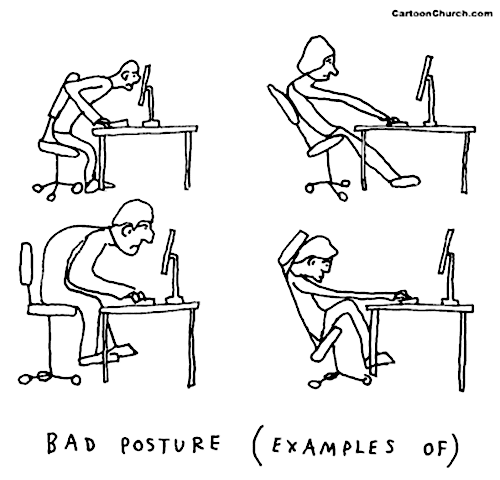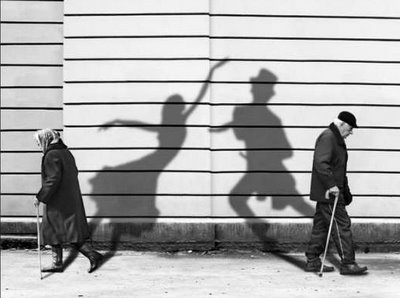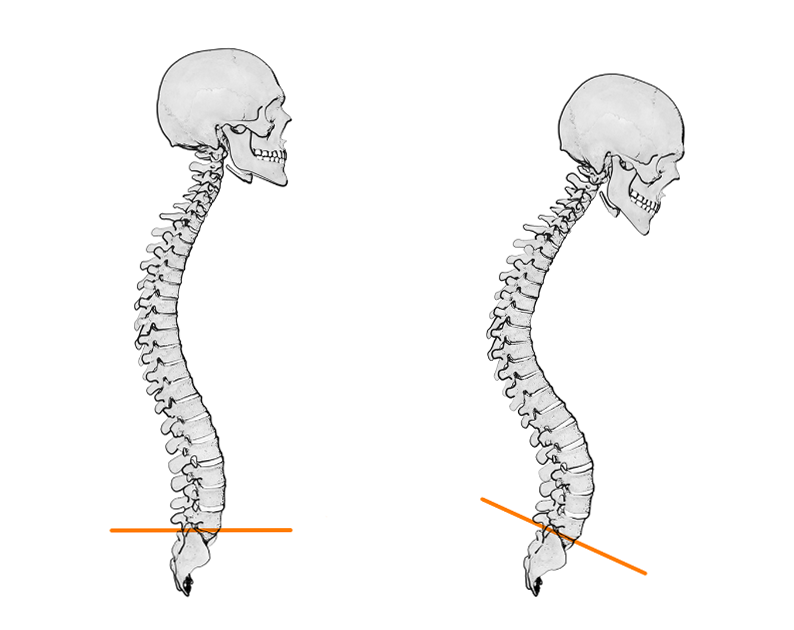 Why We Develop Poor Posture
Why We Develop Poor Posture
Posture is impacted by many aspects of our daily lives, some physical and others psychological.
Physical factors include how we habitually stand or sit at home or at work. Long hours stuck in the same position can cause joints to stiffen, and muscles to tighten and become weak. Injuries which aren’t properly managed can haunt us via dysfunctional movment patterns. And insufficient exercise leads our deep core muscles to lack the strength needed to structurally support our spine and skeletal system.
Psychological factors that impact posture include how we deal with stress and self-esteem levels, and whether we tend towards self-confidence and assurance, or anxiety and depression. Each of these mindsets influence how we carry ourselves physically. A positive posture might present as standing tall and free of tension. Negative posture patterns often appear in the form of tight, hunched shoulders or a sunken chest. The reverse is also true, how we hold our body can directly impact the way we feel emotionally.
The Influence of Age
 Good posture comes naturally to most of us in our youthful years. When we’re young our supportive core muscles are innately stronger and we often lead more energetic lifestyles. Also, the wear and tear of daily life has yet to catch up with us.
Good posture comes naturally to most of us in our youthful years. When we’re young our supportive core muscles are innately stronger and we often lead more energetic lifestyles. Also, the wear and tear of daily life has yet to catch up with us.
As we age however, the physical strains and psychological stresses of life accumulate. Poor posture and movement habits become ingrained, old injuries come back to haunt, and, unless checked through thoughtful exercise, there is an inevitable weakening of all of our muscles.
Whatever the reason, poor posture causes unnecessary stress on our joints as they’re held in positions they weren’t designed for. The result can be discomfort and pain, whether it’s in the lower back, shoulders, neck, hips or some other body part.
Can Poor Posture Be Fixed?
 Now for some good news. With a little effort and awareness posture can be improved. Thankfully, we’re never too old to rebuild muscle strength and become more attuned to our postural tendencies in order to change them.
Now for some good news. With a little effort and awareness posture can be improved. Thankfully, we’re never too old to rebuild muscle strength and become more attuned to our postural tendencies in order to change them.
The first step in overcoming postural issues is to become aware of them. After all, how can we fix a stooping posture if we aren’t conscious that we’re stooping in the first place? Once we become of more mindful of our posture we can begin to reclaim ownership over it.
The next step is to consider the cause. Why is the poor posture happening? Is it because of the way you stand at your job or sit at your desk? Is it due to an old injury? Is it because stress or depression is quite literally getting you down? Once we understand the origin of our postural habits we can take another step towards solving them.
Connect
For more yoga articles, updates, classes and workshops, sign up for my newsletter at the top of the page or like on Facebook at Ann West :: Iyengar Yoga. You can contact me directly by email or call (858) 224-2484.
© 2020 by Ann West. All rights reserved.
So sorry this will be missed by me! Looks just wonderful. I will be out of town visiting my Mum and brother. Assuming I can get on a plane. I will stay up on all of this.
Thank you, Ann!